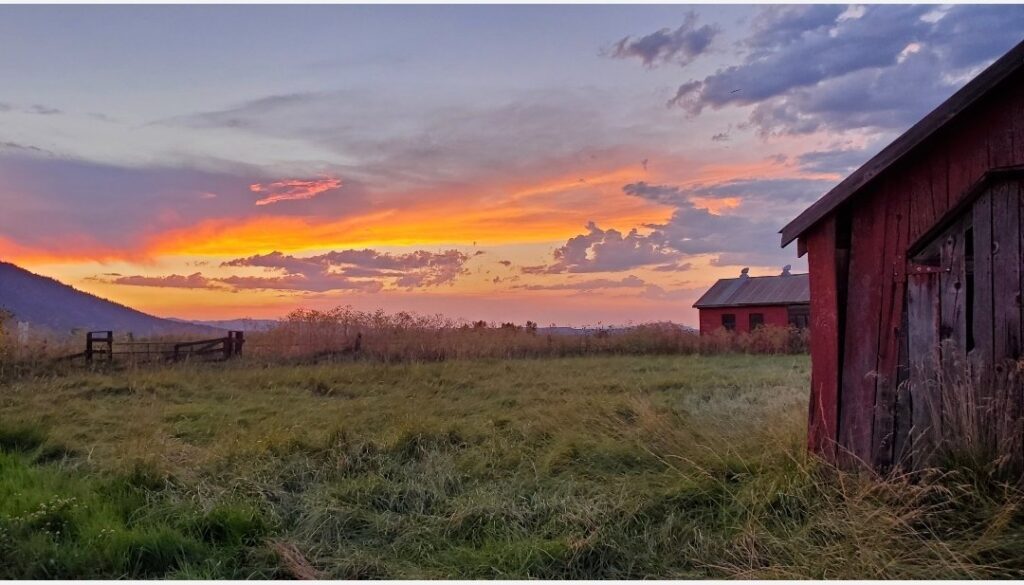Wild Rice Farm Will Sustain Both Family Agriculture And The Environment Under Land Trust Conservation Agreement

For more than twenty-five years, the Noel family have farmed wild rice in the Fall River Valley in Northeastern Shasta County.
Their 318 acres of land will now be permanently protected through a collaboration with the Shasta Land Trust and the California Department of Conservation.
Ted Noel, the property’s owner, told the Shasta Land Trust he’s pleased that the conservation agreement allows the property to continue to be used as a working wild rice farm while benefiting wildlife.
“The property is important for migrating waterfowl,” Noel said, “with our rice fields acting as a surrogate wetland for bird species migrating up in the spring, and down in the fall.”
Birds traveling along the Pacific Flyway use flooded rice fields as migratory habitat along the way. In the winter, those migrating birds include sandhill cranes, mallards, widgeons, gadwalls, and a variety of geese.
Paul Vienneau, Executive Director of the Shasta Land Trust, told Shasta Scout by phone this week that the Noel family approached his organization in hopes of having their family property conserved, in order to continue using it for agricultural purposes, while ensuring it won’t be developed in future.
The Shasta Land Trust is a nonprofit organization dedicated to conserving the beauty, character and diversity of significant Northern California land. Since its founding in 1998, the Land Trust has completed almost thirty conservation agreements, allowing over 44,000 acres of Shasta County land to be preserved for environmental benefit.
Similarly to all conservation easements, Vienneau explained, the land will continue to be privately owned by the Noel family. What’s changed is that the Shasta Land Trust has purchased development rights to the property, using California Department of Conservation funds.
“If you pulled this project (on County documents),” Vienneau said, “you’d see the Shasta Land Trust listed on the title. Technically, we now hold an interest in this property. The landowner can continue to farm it, ranch it, live on it, sell it, lease it, or give it up as part of an inheritance. The only thing they can’t do is (use it) for commercial development.”
And neither can anyone else. Once in place, the conservation easement remains with the property regardless of who owns it, Viennneau said.
The newly-conserved Noel Ranch property includes almost 10% of the shoreline along Shasta County’s Fall River. The property contains what is known as emergent wetland habitat which benefits over 160 species of birds. The property also falls within a designated Audubon Society Important Bird Area, providing critical habitat for birds migrating along the Pacific Coast Flyway, according to the Land Trust.
The Noel Ranch easement, like many the Shasta Land Trust has been focusing on, is agriculturally focused. The easement on the property was purchased with funds provided through the California Strategic Growth Council’s Sustainable Agricultural Lands Conservation (SALC) program. Some SALC grants, like the one used for the Noel Ranch, support the permanent protection of of croplands and rangelands to protect them from being converted to non-agricultural uses, such as housing developments.
“These ranchers and farmers are getting money to protect these properties because the state has highlighted agricultural areas as important and placed a large amount of cap-and-trade money into investing in them,” Vienneau explained.
He said ranchers in the Shasta County area are well aware of the work of the Land Trust and routinely approach the organization asking to be considered for a conservation easement.
Once a property is chosen to be conserved, the Land Trust will apply for State grant funds and utilize them to put the formal conservation easement in place. The funds pay the property owner for the value of the land, as determined by an outside auditor.
The Land Trust currently has about fifteen properties on a waiting list to be considered for easements, but only has the resources to apply for 2–3 grants for conservation a year. Choosing which properties to prioritize, Vienneau said, involves a formal internal decision-making process.
“We go through a process internally through a Lands Committee composed of community members and Board members. They make a recommendation to the overall Board who then gives the go-ahead on which easements to write grants for.”
Conserving the Noel Ranch is part of Shasta Land Trust’s larger efforts across the ecologically important area known as the Fall River Valley watershed. The organization has now worked to conserve over 8,200 acres of this watershed, which was originally stewarded by the Pit River Tribe.
It’s a special and ecologically important area, Vienneau said. And because the Fall River Valley is relatively small, investing in conservation easements also provides an opportunity for the Shasta Land Trust to increase environmental connectivity throughout the space.
“It’s kind of what we deem to be a very unique valley. It has a high concentration of farming capacity . . . and incredible habitat for migratory birds”
“It’s also one of the most famous fly-fishing areas in the country,” Vienneau continued. “It very rarely changes temperature throughout the year, so it’s phenomenal for fly fishing.”
If you have a correction to this story you can submit it here. Have information to share? Email us: editor@shastascout.org